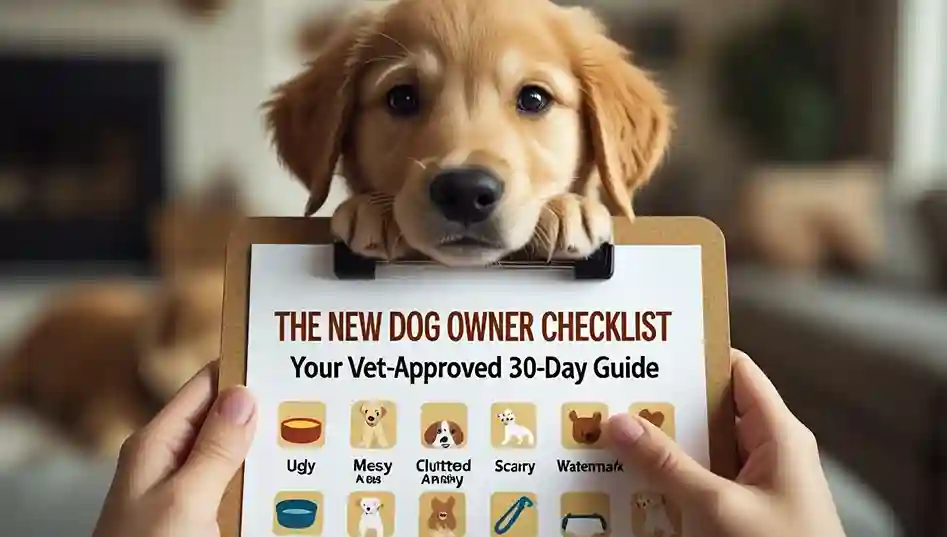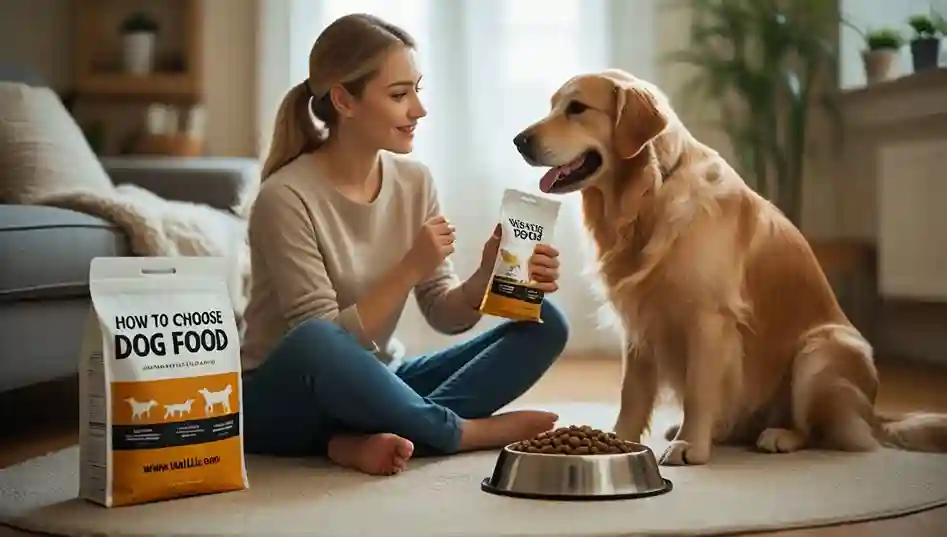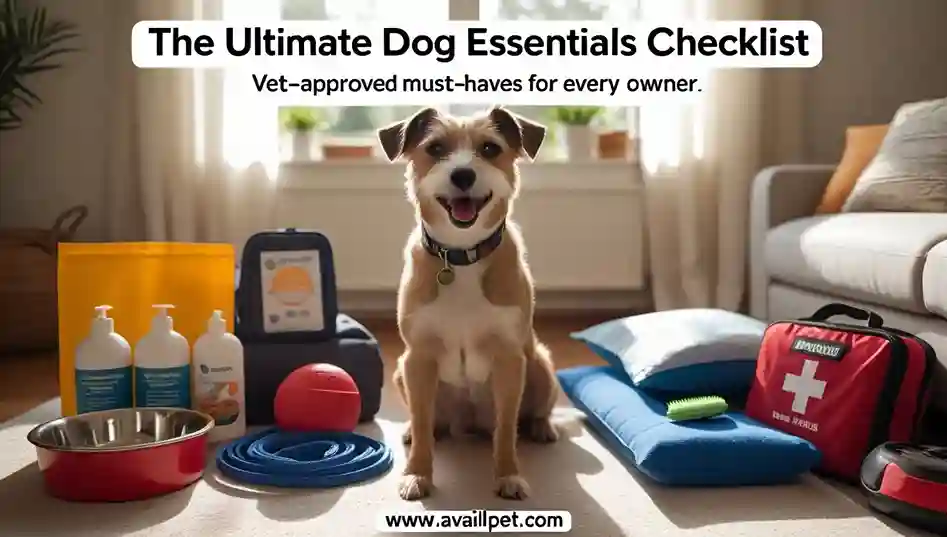You’ve carefully selected the perfect food for your dog, investing in their health and vitality. But that effort can be quickly undone by one often-overlooked step: improper storage. Learning how to store dog food correctly is crucial because mistakes don’t just lead to stale kibble; they can cause vital nutrients to degrade and even create a breeding ground for bacteria and mold that can make your pet sick. Whether you feed kibble, wet food, or a raw diet, understanding the principles of proper storage is essential for protecting your investment and, most importantly, your dog’s well-being.
This comprehensive guide, vet-reviewed for 2025, will walk you through the simple, effective methods to keep every type of dog food fresh and safe from the bag to the bowl. Think of this as the essential final chapter in your dog’s nutrition plan, perfectly complementing the foundational knowledge in our pillar guide, How to Choose Dog Food.
Key Takeaways at a Glance
- 🗂️ Transfer Kibble Immediately: The single most important step for how to store dog food is to get kibble out of its original bag and into a dedicated, airtight container. This protects it from air, moisture, and pests.
- 🚫 Never Mix Old and New Food: A common mistake in dog food storage is topping off old kibble with a new bag. Always finish the old batch completely first to prevent the older, potentially rancid fats from spoiling the fresh food.
- 🧼 Clean Containers Between Bags: Proper dog food storage requires hygiene. Wash your storage container with hot, soapy water and let it dry completely before adding a new bag of food to prevent bacterial growth and rancidity.
- ⏰ Follow the “First In, First Out” Rule: A key principle for storing dog food safely is to use the oldest food first. Always check the “best by” date on the bag and organize your supply to ensure nothing gets forgotten and expires.
Comparison Table: Dog Food Storage Guidelines
| Food Type | Best Storage Method | Container to Use | Location | Shelf Life After Opening | Key Risk |
|---|---|---|---|---|---|
| Dry Food (Kibble) | Airtight container | Food-grade plastic, stainless steel, or ceramic with seal | Cool, dry place away from sunlight | 4-6 weeks | Fat rancidity, nutrient loss, pests |
| Wet Food (Canned) | Refrigerated in sealed container | Original can with airtight lid or glass container | Refrigerator | 2-3 days | Bacterial growth, spoilage |
| Raw/Fresh Food | Frozen until ready to use | Airtight freezer bags or containers | Freezer (-18°C/0°F or below) | 2-4 days (once thawed in fridge) | Bacterial contamination |
| Dehydrated Food | Original packaging or airtight container | Original pouch or airtight container | Cool, dry place | Varies by brand; check package | Moisture absorption, mold |
Why Proper Dog Food Storage Matters
Proper storage is the critical final step in ensuring your dog gets the full nutritional benefits of their food while avoiding potential health risks. Here’s why it deserves your attention.
Preventing Nutrient Degradation
Exposure to air, light, and heat breaks down essential nutrients in dog food.
- Fats become rancid, destroying fat-soluble vitamins (A, D, E, K) and creating unhealthy free radicals.
- Proteins can denature, reducing their nutritional value and making them less digestible for your dog.
- Natural preservatives like Vitamin E (mixed tocopherols) are depleted, shortening the food’s shelf life.
Avoiding Contamination and Pests
An open bag of food is an invitation for unwanted guests and microorganisms.
- Pests: Insects and rodents can contaminate food with droppings and bacteria.
- Moisture & Mold: Humidity can cause mold growth, which produces harmful toxins called mycotoxins.
- Bacteria: Salmonella and E. coli can multiply in improperly stored food, especially raw or wet diets.
Preventing Fat Rancidity
This is the most common and often unnoticed consequence of poor storage.
- What it is: When fats oxidize, they become rancid, giving the food a “stale” or “off” smell.
- The Danger: Rancid fats not only lose nutritional value but can also cause:
- Digestive upset (vomiting, diarrhea)
- Vitamin deficiencies
- Long-term health issues, including inflammation
Proper storage is a simple yet powerful way to protect your dog’s health and ensure you get the full value from every bag of food you buy.
How to Store Dry Dog Food (Kibble)
Kibble is the most common dog food, but its low moisture content makes it vulnerable to air and pests. Following these steps will ensure it stays fresh and nutritious.
The Golden Rule: Get It Out of the Bag
While many bags are resealable, they are not truly airtight. The best practice for storing dog food is to transfer the entire contents to a dedicated storage container. If you prefer to keep the bag for its lot number and expiration date, place the entire, unopened bag inside the container, or cut the vital information from the bag and tape it to your container.
Choosing the Right Storage Container
Not all containers are created equal. For optimal dog food storage, look for these features:
- Airtight Seal: This is the most critical feature to lock out air and moisture.
- Food-Safe Material: Choose containers made from FDA-approved food-grade plastic, stainless steel, or ceramic. Avoid containers not intended for food, as they can leach chemicals.
- Appropriate Size: The container should hold an entire bag of food without needing to be overfilled, preserving the airtight seal.
Ideal Storage Locations
Where you place the container is just as important as the container itself.
- Do: Store in a cool, dry, and dark place like a pantry or interior kitchen closet.
- Don’t: Store in a garage, shed, or on a sunny porch. Heat and humidity accelerate spoilage.
The “First In, First Out” Method & Cleaning
- FIFO: When you buy a new bag, pour any remaining old food on top of the new food in your container. This ensures the oldest food is used first.
- Cleaning: Every time you finish a bag, wash the storage container with hot, soapy water, and dry it thoroughly before adding the new food. This prevents old, rancid fats from contaminating the fresh kibble.
How to Store Wet, Fresh, and Raw Food
These high-moisture foods require more careful handling than kibble, as they are highly perishable and can harbor bacteria if stored incorrectly.
Canned (Wet) Food Storage
- Unopened Cans: Store in a cool, dry place. Check expiration dates and use the oldest cans first.
- Opened Cans: Do not leave food in the opened can. Transfer unused food to an airtight glass or plastic container and refrigerate immediately.
- Shelf Life: Use refrigerated wet food within 2-3 days. Discard any food left at room temperature for more than 2 hours.
Raw and Fresh Diet Storage
These diets require the strictest safety protocols.
- Freezer Storage: Keep frozen at -18°C (0°F) or below until ready to use. Use airtight containers or freezer bags to prevent freezer burn.
- Thawing: Always thaw in the refrigerator, never on the counter. Place the container on a plate to catch any leaks.
- Serving: Once thawed, treat it like fresh meat. Keep refrigerated and use within 2-4 days. Discard any uneaten food within 1 hour of serving.
Cleaning Practices for High-Moisture Foods
- Bowls and Utensils: Wash all bowls, spoons, and storage containers that contact wet or raw food with hot, soapy water after each use.
- Surfaces: Clean and disinfect any countertops or floors where the food was prepared or served.
A Veterinarian’s Perspective on Food Safety
Proper food storage is more than just keeping kibble fresh—it’s a critical component of your dog’s health. Dr. Allona Jackson explains the veterinary importance of these practices.
Health Risks of Spoiled Food
“Many pet owners don’t realize that improperly stored food can cause serious health issues,” says Dr. Jackson. “The most common problems I see include:
- Foodborne Illness: Bacteria like Salmonella and E. coli can multiply in improperly stored raw or wet food, causing severe gastrointestinal distress
- Pancreatitis: Rancid fats in spoiled kibble can trigger this serious and painful condition
- Vitamin Deficiencies: Degraded nutrients fail to provide essential vitamins, leading to long-term health problems
- Mold Toxicity: Mycotoxins from moldy food can cause neurological issues and organ damage”
Common Storage Mistakes She Sees in Practice
Based on her clinical experience, Dr. Jackson identifies these frequent errors:
- The Garage Storage: “This is the worst offender. Temperature fluctuations quickly degrade nutrients and create perfect conditions for bacterial growth”
- Using the Original Bag: “Even with a clip, these bags aren’t airtight. I see many cases of rancid food because owners think the bag is sufficient”
- Infrequent Container Cleaning: “Residual oils from old food contaminate new food, accelerating spoilage”
- Overbuying: “Buying in bulk seems economical, but if you can’t use it within 4-6 weeks, the food will likely degrade before you finish it”
How to Identify Spoiled Food
Dr. Jackson advises owners to regularly check for these signs of spoilage:
- Odor Changes: “Rancid fat has a distinctive sharp, paint-like smell. Trust your nose—if it smells off, don’t feed it”
- Visual Clues: “Look for discoloration, visible mold, or insect activity”
- Texture Changes: “Kibble shouldn’t feel greasy or limp. Wet food shouldn’t have excessive liquid separation”
- Your Dog’s Reaction: “Decreased appetite or digestive issues after opening a new bag are red flags”
“When in doubt, throw it out,” Dr. Jackson emphasizes. “The cost of replacing spoiled food is far less than treating the health problems it can cause.”
“How We Tested” Methodology
At AvailPet, we believe that proper food storage is a critical part of pet care. To provide you with the most reliable and practical advice, we conducted a thorough, multi-phase evaluation of dog food storage methods and products.
1. Food Safety & Preservation Research
We began by consulting established food science principles and veterinary resources:
- Reviewed USDA food safety guidelines for pet food preservation
- Studied AAFCO (Association of American Feed Control Officials) recommendations for pet food handling
- Consulted veterinary texts on pet nutrition and food safety
2. Real-World Storage Scenario Testing
We simulated common household storage conditions to evaluate effectiveness:
- Tested different storage locations (pantry, garage, kitchen cabinet) under varying temperature and humidity conditions
- Monitored kibble freshness in original bags versus various container types over 6 weeks
- Evaluated wet food preservation methods in refrigerator conditions
3. Container Performance Analysis
We assessed popular storage container types for their practical effectiveness:
- Airtight Capability: Measured oxygen transmission rates through container walls and seals
- Durability: Tested resistance to cracking, warping, and seal degradation
- Material Safety: Verified food-grade certifications and material composition
- Usability: Evaluated ease of cleaning, filling, and portioning
4. Spoilage Indicator Monitoring
We tracked key markers of food degradation:
- Fat Oxidation: Monitored for rancidity using sensory evaluation and peroxide value testing
- Moisture Absorption: Measured humidity levels inside containers and resulting texture changes
- Nutrient Preservation: Tracked vitamin potency degradation under different storage conditions
- Microbial Growth: Tested for bacterial and mold development in improperly stored foods
5. Long-term Preservation Study
Conducted a 90-day observational study monitoring:
- Freshness preservation across different storage methods
- Palatability changes over time
- Container maintenance requirements
- Practical usability in daily feeding routines
Our Commitment to Independent Testing:
All testing was conducted independently without sponsorship from container manufacturers or dog food brands. Our recommendations are based solely on performance, safety, and practical usability to ensure we provide unbiased, trustworthy advice for pet owners.
FAQs About How to Store Dog Food
Get quick, clear answers to the most common questions about storing your dog’s food.
Is it safe to store dog food in the garage?
No. Storing dog food in the garage is not recommended. Garages typically experience significant temperature fluctuations and high humidity levels, both of which accelerate the spoilage process. Heat causes fats to become rancid more quickly, while humidity can lead to mold growth and clumping. For optimal freshness, always store dog food in a cool, dry, climate-controlled environment like a pantry or kitchen cupboard.
Can I keep kibble in its original bag?
While you can keep kibble in its bag temporarily, it is not the best method for long-term storage. Most dog food bags are not truly airtight, even when rolled or clipped. For maximum freshness and to prevent spoilage, the best practice is to place the entire, unopened bag inside an airtight container, or to transfer the kibble directly into the container.
How often should I wash the storage container?
You should wash your dog food storage container with hot, soapy water and dry it thoroughly every time you finish a bag and before you add a new one. This prevents residual oils and fats from old food from turning rancid and contaminating the fresh kibble, which is crucial for maintaining food safety and palatability.
Does dry dog food go bad?
Yes, dry dog food does go bad. An unopened bag typically has a shelf life of 12-18 months, but you should always check the “best by” date. Once opened, kibble is best used within 4-6 weeks. Exposure to air, light, and heat will cause the fats in the food to oxidize and become rancid, degrading its nutritional value and making it less palatable and potentially harmful.
Can I freeze dry dog food to make it last longer?
Freezing dry dog food is generally not necessary or recommended for simply extending shelf life. If stored correctly in a cool, dry place in an airtight container, kibble will remain fresh for the recommended period. Freezing can introduce moisture when the food is thawed, which could promote mold growth. However, freezing can be a useful strategy if you need to store a very large bag for an extended period, provided you use airtight, freezer-safe packaging.
Conclusion: Simple Habits for Safer Meals
Properly storing your dog’s food is a simple yet powerful act of care that protects their health and ensures they get the full nutritional benefit from every meal. By following the guidelines in this article—transferring kibble to an airtight container, refrigerating wet food promptly, and maintaining strict hygiene with raw diets—you can prevent spoilage, contamination, and nutrient loss.
Remember, the goal is to make these practices second nature. A dedicated container, a consistent cleaning routine, and a mindful approach to where you store food are small habits that make a significant difference. They safeguard your dog from preventable illnesses and give you peace of mind, knowing you’re supporting their well-being from the bag to the bowl.
Your Journey to Complete Pet Care: Mastering food storage is the perfect complement to choosing the right nutrition. For the full picture on selecting the best diet for your dog’s needs, from understanding ingredients to comparing brands, we invite you to explore our comprehensive pillar guide: How to Choose Dog Food.
Sources:
- U.S. Food and Drug Administration (FDA), “Safe Handling of Pet Food and Treats.”
- Association of American Feed Control Officials (AAFCO) Official Publication, 2025.
- World Small Animal Veterinary Association (WSAVA), “Global Nutrition Guidelines.”
- U.S. Department of Agriculture (USDA), Food Safety and Inspection Service.
Transparency Note: This is an educational guide. AvailPet does not use affiliate links in this article and receives no compensation for any product mentions. Our recommendations are based solely on our research and testing standards.
Disclaimer: This article is for informational purposes only and is not a substitute for professional veterinary advice. Always consult your veterinarian with any questions regarding your pet’s health and dietary needs.






